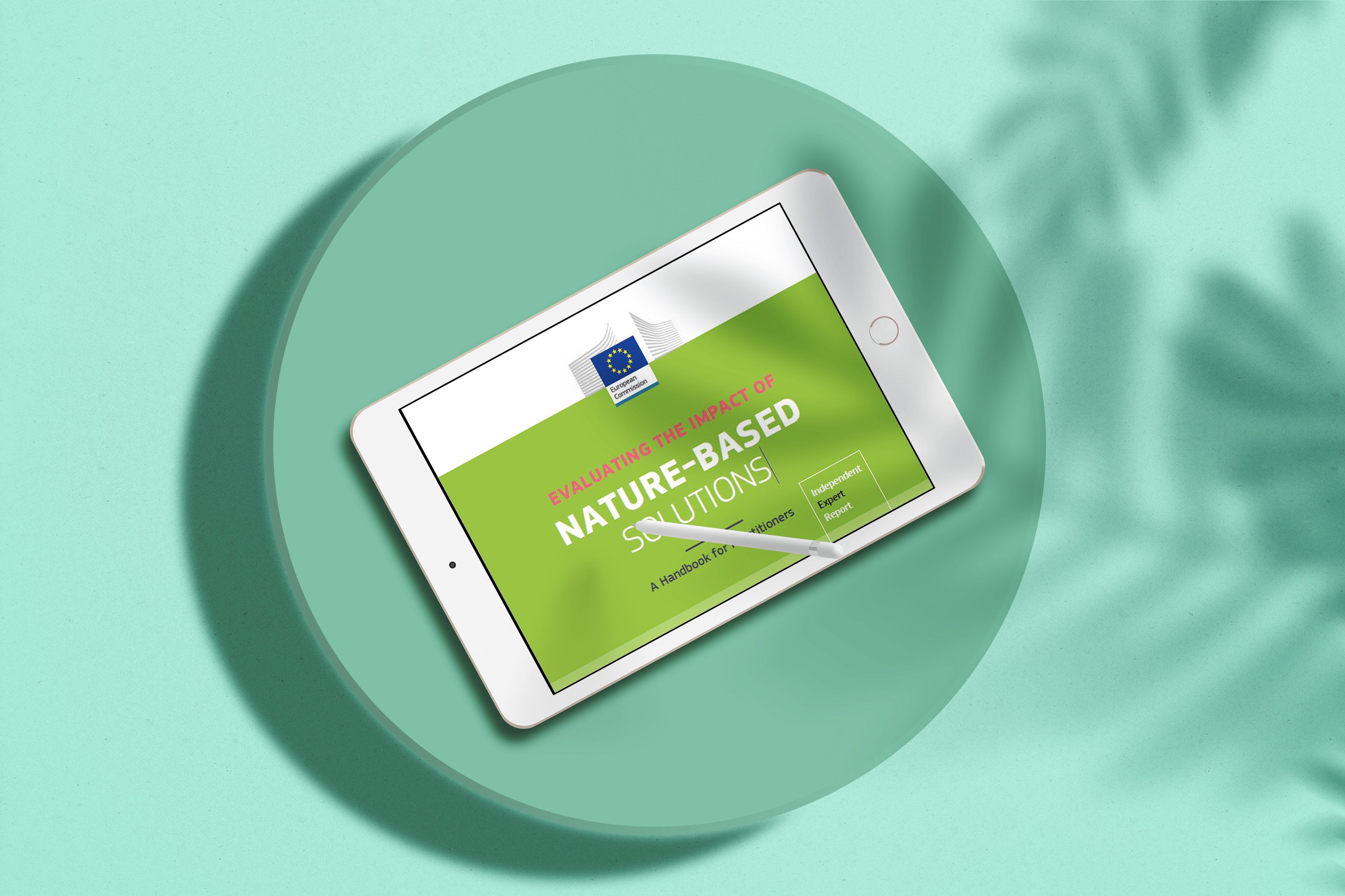Nature-based solutions is a concept that embodies new ways to approach socio-ecological adaptation and resilience, with equal reliance upon social, environmental and economic domains.
The European Commission defines NBS as solutions that are “inspired and supported by nature, which are cost-effective, simultaneously provide environmental, social and economic benefits and help build resilience. Such solutions bring more, and more diverse, nature and natural features and processes into cities, landscapes and seascapes, through locally adapted, resource-efficient and systemic interventions[i].”
Based on the work carried out along several EU H2020 funded projects (BiodivERsA, CLEARING HOUSE, CLEVER Cities, CONNECTING Nature, EdiCitNet, EKLIPSE, GREEN SURGE, GROW GREEN, Inspiration, MAES/EnRoute, NAIAD, Nature4Cities, Naturvation, NetworkNature, OpenNESS, OPERAs, OPERANDUM, PHUSICOS, proGIreg, RECONECT, REGREEN, Think Nature, TURaS, UNaLab, URBAN GreenUP, and URBiNAT), the Commission put together the above-mentioned handbook to serve as a guide to the development and implementation of scientifically-valid monitoring and evaluation plans for the evaluation of NBS impacts across the following 12 societal challenge areas:
The handbook is also accompanied by an Appendix of Methods, that encompasses environmental, social, and economic domains in the NBS assessment, and summarises the respective methods that determined each of the indicators mentioned in the Handbook.
In summary, both documents provide detailed information to guide the development and implementation of an NBS monitoring and evaluation plan, and the use of the NBS impact indicators presented as a query tool.
----------------------------------------------------

Below, we add some examples of Nature Based Solutions that the handbook provides. The handbook divides the proposed indicators by the type of NBS, as they can be broadly grouped based upon their primary objective or function and by the level of ecosystem intervention:
Type 1 Nature Based Solutions
Minimal or no intervention in ecosystems, with objectives related to maintaining or improving delivery of ecosystem services within and beyond the protected ecosystems. This includes protection and conservation strategies, urban planning strategies, and (environmental) monitoring strategies. Due to their nature, Type 1 NBS fall largely within the domain of governance, with implementation of Type 1 NBS strategies potentially limited or driven by a range of biophysical, social and institutional factors.
• Protection and conservation strategies
- Establishment of protected areas or conservation zones
- Limitation or prevention of specific land use and/or practices
- Ensuring of continuity of ecological networks (protection from fragmentation)
- Maintenance or enhancement of natural wetlands
• Urban planning strategies
- Ensuring of continuity of ecological network
- Controlling urban expansion
• Monitoring
- Regular monitoring of physical, chemical or biological indicators
Type 2 Nature Based Solutions
Extensive or intensive management approaches seeking to develop sustainable, multifunctional ecosystems and landscapes in order to improve delivery of ecosystem services relative to conventional interventions. These are comprised of various sustainable management protocols.
• Sustainable management protocols
- Integrated pest/weed management
- Spatial and/or time and frequency aspects of integrated and ecological management plans
- Creation and preservation of habitats and shelters to support biodiversity (e.g., insect hotels for wild bees, next boxes for native bats and birds, stopover habitat/”rest stops” for migratory birds)
- Installation of apiaries
- Sustainable fertiliser use
- Control of erosion through management of grazing animal stocking density and exclusion of grazing animals from riparian areas
- Composting of organic wastes and reuse of composted material
- Integrated water resource management
- Protection of plant resources from pest and disease
- Aquifer protection from pollution and sustainable management of withdrawals
Type 3 Nature Based Solutions
Characterised by highly intensive ecosystem management or creation of new ecosystems, which is why are the most “visible” solutions.
• Green space - multifunctional open space characterised by natural vegetation
and permeable surfaces
- Urban parks and gardens of all sizes
- Heritage park
- Botanical garden
- Community garden
- Cemetery
- Schoolyards and sports fields
- Meadow
- Green strips
- Green transport track
- “Multifunctional” dry detention pond or vegetated drainage basin
• Trees and shrubs
- Forests (including afforestation)
- Orchards
- Vineyards
- Hedges/shrubs/green fences
- Street trees
• Soil conservation and quality management
- Slope revegetation
- Cover crops
- Windbreaks
- Conservation tillage practices
- Permaculture
- Deep-rooted perennials
- Organic matter enrichment (manure, biosolids, green manure, compost, etc.)
- Inorganic soil conditioners and amendments (biochar, vermiculite, etc.)
• Blue-green space establishment or restoration
- Riparian buffer zones
- Mangroves
- Saltmarsh/seagrass
- Intertidal habitats
- Dune structures
• Green built environment
- Green roof
- Green-blue roof
- Green wall/façade
- Green alley
- Infiltration planters and tree boxes
- Temporary and/or small-scale interventions including green furniture, green living rooms, etc.
• Natural or semi-natural water storage and transport structures
- Surface wetland
- Floodplains, floodplain reconnection with rivers
- Restoration of degraded waterbodies
- Restoration of degraded waterways, including re-meandering of
- streams and river daylighting
- Retention pond/wet detention pond
• Infiltration, filtration, and biofiltration structures
- Infiltration basin
- Vegetated filter strip
- Rain garden
- Wet/dry vegetated swale, with or without check dams
- Subsurface wetland or filtration system
- Bioretention basin/bioretention cell
The preceding list of NBS is non-exhaustive and is intended only to provide examples of different types of NBS per the Type 1-3 classification system. The handbook indicates in general whether a particular indicator is applicable to Type 1, 2 or 3 NBS. For example:
Indicators in the Climate Resilience challenge area primarily address:
- Direct impacts of NBS on greenhouse gas emissions via carbon storage and sequestration in vegetation and soil.
- Indirect impacts of NBS on avoided greenhouse gas emissions from various activities, through the provision of passive cooling, insulating and/or water treatment; and,
- Impacts of NBS on temperature and human comfort.
Therefore, some recommended indicators are:
For all 12 categories and the full list of indicators, we recommend reading the full handbook available here:
Handbook Appendix




